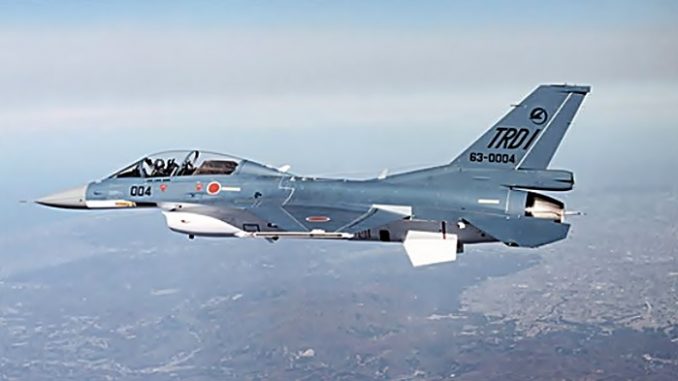
According to figures released by the Defense Ministry, Japan’s air force scrambled fighter jets to chase away foreign aircraft at a record pace in the fiscal year to March.
The new record was set as China seeks to expand beyond its former military boundaries deeper into the Western Pacific.

BYPASS THE CENSORS
Sign up to get unfiltered news delivered straight to your inbox.
You can unsubscribe any time. By subscribing you agree to our Terms of Use
Latest Video
Japan Times reports:
The 1,168 scrambles were the most since records began being kept in 1958, besting the previous high of 944 — a figure that came at the height of the Cold War in 1984.
Of the total, 851 scrambles, or 73 percent, came in response to Chinese flights, 280 more than in the previous fiscal year. The figure was the largest since the Air Self-Defense Force began publicizing the number of scrambles against each country.
ASDF encounters with Russian aircraft — often bombers that skirt Japan’s airspace — rose to 301, or 26 percent of the total.
No aircraft violated Japanese airspace in fiscal 2016, which ended on March 30, the Defense Ministry said Thursday.The Defense Ministry’s Joint Staff also said it had released information on a total of 26 “unusual” flights in international but politically sensitive airspace, including several by Chinese fighters and bombers.
Early last month, Japan scrambled fighter jets after China’s navy carried out a large-scale drill through a strategic entryway into the Western Pacific between the islands of Miyako and Okinawa — part of Beijing’s growing push to project its military clout farther into the Pacific.
The fighters were accompanied by bombers and early warning aircraft that flew through the Miyako Strait northeast of Taiwan and into the Pacific. The aircraft then carried out drills with Chinese warships in the area.
In December, China’s first aircraft carrier, the Liaoning, accompanied by three guided-missile destroyers and two frigates, cruised into the Western Pacific for the first time via the waterway.
A month before that, the ASDF scrambled aircraft in response to a flight by two Chinese fighters, bombers and surveillance planes through the area. In September, Beijing sent at least eight fighters and bombers through the strait.
China’s military has also sent aircraft, including bombers and fighters, through the Tsushima Strait from the East China Sea into the Sea of Japan and back, most recently in early January.
Beijing has blasted Japan for hyping the flights, calling them part of “regular” drills, while Tokyo has said it will keep a steady eye on the “expanding and increasing” actions of the Chinese military in the area.
The drills come amid bad blood between the two Asian rivals as their dispute over the Japanese-controlled, China-claimed Senkaku Islands in the East China Sea continues to boil. This has prompted concern over prospects of an accidental clash near the islets, which are known as Diaoyu in China and Tiaoyutai in Taiwan, which also claims them.
While talks to establish a maritime and air communications protocol intended to prevent accidental clashes between aircraft and vessels have been ongoing between the two sides, implementation of the mechanism has been stalled since Japan effectively nationalized the Senkakus in 2012.
In the meantime, Beijing is expected to ramp up its forays into the Western Pacific and East China Sea. June Teufel Dreyer, a University of Miami political science professor who studies Sino-Japanese relations, said China would “absolutely” continue its push, warning that regardless of a communications protocol, chances of an accidental clash would remain high.
“An accidental clash can occur even if there is a safety mechanism; all the latter can do is hope to reduce the probability that it will occur,” Dreyer said.
“The Chinese side will almost certainly gradually increase the number of flights in or near Japanese airspace,” she added. “If the government of Japan chooses to challenge, the probability of accidental crashes increases — and provides the Chinese government with a ‘provocation’ to which ‘China is forced to respond.’ “
If Japan chooses to withdraw, Dreyer added, then the area will be absorbed into the Chinese sphere of control.
China’s air force announced in mid-September that it would be organizing “regular” exercises that fly past the so-called first island chain — a strategically important entryway into the Western Pacific that includes Japan’s Ryukyu Islands and Taiwan.
Experts say the extensive chains of Pacific islands that ring in China are seen by some in Beijing as a natural barrier that contains China and its navy. But other Chinese military theorists reportedly view the island chains more as benchmarks or springboards for Chinese military operations.


